In the ever-evolving landscape of kitchen appliances, the gaufrier has emerged as a staple in professional culinary circles. This deceptively simple Belgian waffle maker has seen a surge in demand, driven by a blend of culinary trends and the quest for unique flavors. As we delve into the professional gaufrier market, it’s clear that innovation, consumer preferences, and strategic partnerships are pivotal factors shaping the industry’s trajectory.
Introduction to Professional Gaufrier Market in Europe and North America
The professional gaufrier market in Europe and North America has experienced remarkable growth over the years, driven by a blend of culinary trends, technological advancements, and evolving consumer demands. This specialized segment of the kitchen appliance industry caters to commercial kitchens, bakeries, and high-end residential setups, offering a wide range of products designed for efficiency and durability. Let’s delve into the nuances of this market, exploring its key characteristics, market dynamics, and future prospects.
Europe, with its rich culinary heritage, has long been a hub for innovation in the food and beverage industry. The continent’s diverse range of cuisines has fueled the demand for specialized equipment like the gaufrier, which is used to make Belgian waffles and other delectable treats. North America, on the other hand, has seen a surge in the popularity of Belgian waffles and breakfast cafes, further boosting the market for professional gaufriers.
One of the primary drivers of growth in this market is the increasing focus on health and wellness. Consumers are seeking out natural, unprocessed foods, and professional kitchens are responding by incorporating more fresh and homemade options onto their menus. The gaufrier fits perfectly into this trend, as it allows for the creation of customizable, low-fat, and high-fiber waffles that resonate with health-conscious diners.
The market for professional gaufriers is also being influenced by the rise of social media and influencer culture. Chefs and culinary artists are using social platforms to showcase their creative waffle designs, which has sparked a wave of interest in the appliance itself. This has not only increased the visibility of gaufriers but has also encouraged chefs to explore new and innovative uses for the device.
In terms of market dynamics, Europe and North America are characterized by a fragmented yet mature landscape. There are numerous players, each with a unique value proposition. Some manufacturers focus on high-end, premium models, while others offer more affordable, entry-level options. The competition is fierce, with companies constantly striving to differentiate themselves through features, quality, and price.
One significant trend in the market is the shift towards energy efficiency. With environmental concerns at the forefront, professional kitchens are looking for appliances that offer both performance and sustainability. Gaufrier manufacturers are responding by developing energy-saving models that reduce operating costs without compromising on output.
OEM (Original Equipment Manufacturer) partnerships play a crucial role in the professional gaufrier market. Many brands opt to outsource the production of their appliances to specialized OEMs that can provide high-quality components and cost-effective production. This allows the brands to focus on their core competencies, such as design, marketing, and customer service.
When it comes to consumer preferences, there are several key factors that influence the purchase of a professional gaufrier. These include the appliance’s ease of use, cleaning efficiency, cooking temperature control, and the ability to create a variety of waffle patterns and sizes. Professional chefs and kitchen managers also value the durability and longevity of the equipment, as well as the availability of spare parts and after-sales service.
Technological advancements have also had a significant impact on the gaufrier market. Features like programmable settings, non-stick surfaces, and digital temperature displays have become standard, while innovations such as touchless operation and integrated waste systems are beginning to gain traction. These features not only enhance the user experience but also improve safety and operational efficiency in the kitchen.
Challenges in the market include navigating the complex regulatory landscapes of Europe and North America, where different countries may have varying safety standards and certifications. Additionally, the high cost of some models can be a barrier to entry for smaller establishments, though there are increasingly more budget-friendly options available.
Looking ahead, the professional gaufrier market is poised for continued growth. The increasing demand for specialty and gourmet foods, coupled with the rise of breakfast cafes and food trucks, is expected to drive demand. Moreover, as technology continues to evolve, we can anticipate even more sophisticated and efficient gaufriers hitting the market.
In conclusion, the professional gaufrier market in Europe and North America is a dynamic and competitive space, with numerous opportunities for growth. By focusing on innovation, quality, and customer needs, manufacturers and OEMs can tap into this thriving sector and help shape the future of the culinary industry.
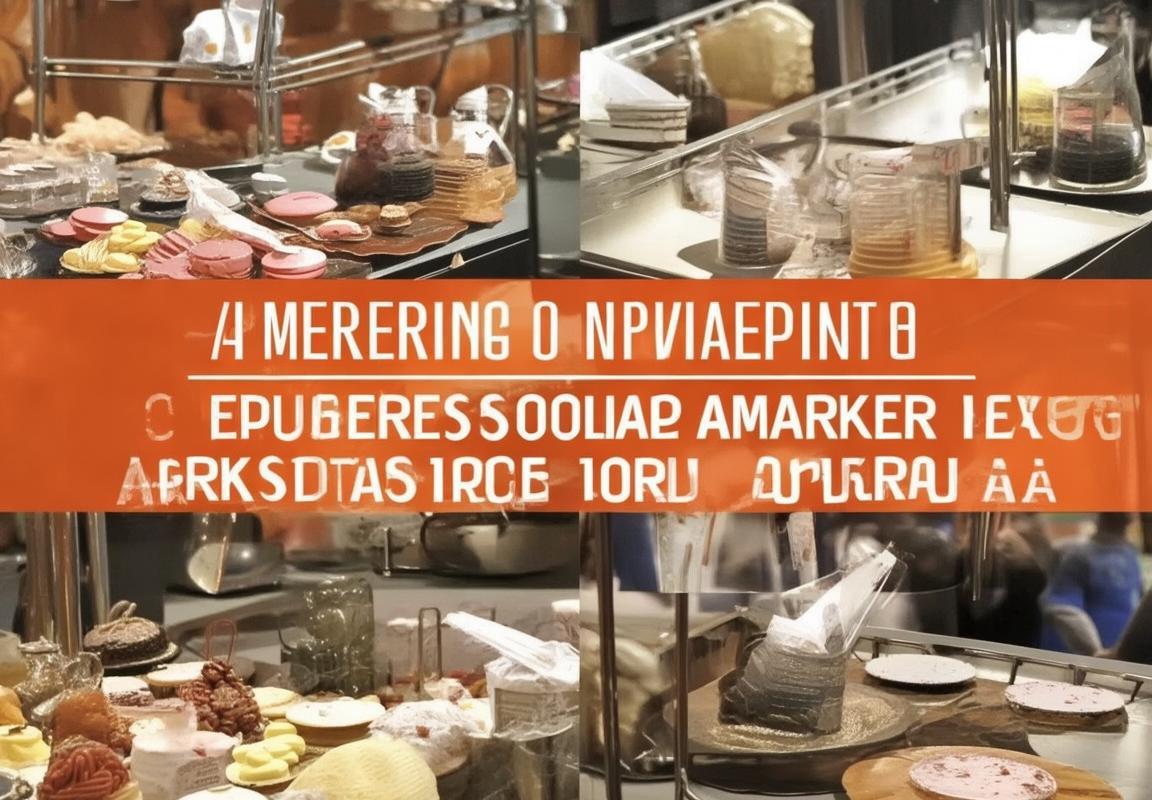
Understanding the Gaufrier: A Brief Overview of the Product
The gaufrier, often overshadowed by its more popular cousin, the waffle iron, holds a unique position in the culinary world. This specialized appliance is designed to create delicate, flaky gaufres, those traditional Belgian waffles with their distinctive heart shape and fine, crispy edges. Here’s a closer look at the gaufrier, its design, functionality, and the art of making these exquisite pastries.
Gaufriers come in various sizes and shapes, but they all share a common purpose: to produce the perfect gaufre. The most recognizable feature of a gaufrier is its non-stick surface, which ensures that the delicate layers of the gaufre are not damaged during the cooking process. These surfaces are typically made of cast aluminum, known for its heat retention and even cooking properties.
The gaufrier’s construction is quite unique, with its two hinged plates that lock together to form the characteristic heart shape. These plates are usually lined with intricate patterns, which are pressed onto the dough to create the distinctive ridges and grooves that define the gaufre’s texture. The patterns can vary from simple to elaborate, reflecting the brand’s identity and the desired aesthetic of the final product.
Cooking with a gaufrier is a delicate balance of heat and timing. The appliance must be preheated to the right temperature, usually around 360°F (182°C), to ensure that the dough sets quickly and evenly. The gaufres are made by spooning a small amount of batter onto one plate, closing the lid, and cooking until the gaufre is golden brown and crisp. The process is quick, taking only a few minutes per gaufre, and the result is a warm, fluffy center with a perfectly crisp exterior.
One of the defining aspects of a professional gaufrier is its ability to produce a large number of gaufres in a short amount of time. This makes it an ideal choice for bakeries, cafes, and even caterers who need to serve a crowd. The size of the gaufrier can range from small, countertop models suitable for home use to industrial-sized machines that can churn out hundreds of gaufres per hour.
In addition to the classic heart shape, modern gaufriers also offer a variety of molds. Some models can produce square gaufres, while others have the capability to make mini or jumbo versions. This versatility allows for a wide range of applications, from serving as a breakfast treat to being used as a base for dessert toppings.
The gaufre itself is a versatile ingredient, often served with sweet toppings like powdered sugar, maple syrup, fruit compotes, or chocolate sauce. Its light, airy texture and the way it holds toppings make it a popular choice for both sweet and savory dishes. In some regions, gaufres are even filled with savory fillings, such as ham and cheese, making them a delightful lunchtime option.
For those who are interested in the art of making gaufres, there are several factors to consider beyond the equipment. The quality of the flour, the consistency of the batter, and the skill of the baker all play a crucial role in the final outcome. Professional bakers often experiment with different ratios of flour, eggs, and liquid to achieve the perfect balance of texture and flavor.
Maintenance is another important aspect of owning a gaufrier. The non-stick surfaces require regular cleaning to prevent the build-up of batter residue, which can affect the quality of future batches. Additionally, the intricate patterns on the plates may need occasional care to ensure they continue to press the dough effectively.
In conclusion, the gaufrier is a specialized appliance that has been crafted to produce the delicate, flaky gaufres that are cherished around the world. Whether used in a professional kitchen or for home use, the gaufrier’s unique design and functionality make it an essential tool for anyone looking to add the authentic taste and texture of Belgium to their culinary repertoire.
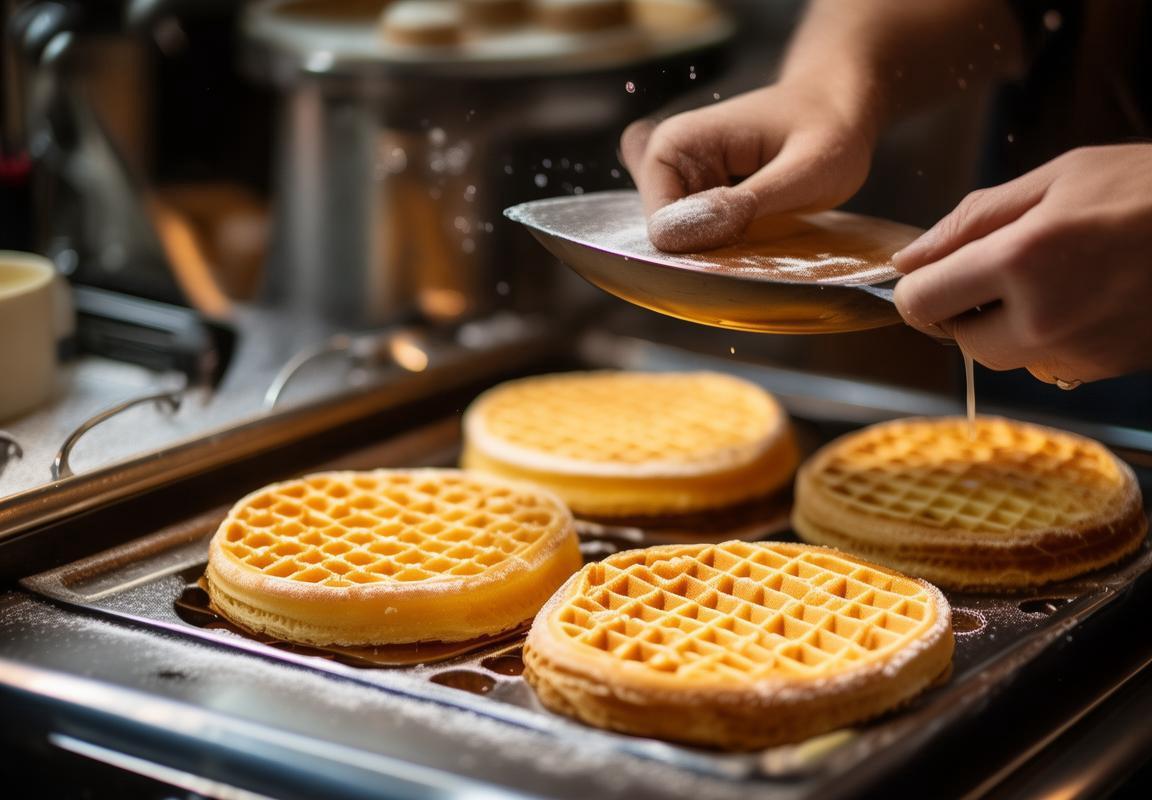
Market Dynamics: Trends Shaping the Professional Gaufrier Industry
The professional gaufrier market in Europe and North America is undergoing a dynamic transformation, influenced by several key trends that are reshaping the industry. From the rise of health-conscious consumers to the integration of smart technology, these factors are driving the evolution of the market.
-
Health and Wellness Focus: There’s a growing emphasis on health and wellness, with consumers increasingly seeking out kitchen appliances that promote healthier eating habits. This shift has led to a demand for gaufriers that offer healthier, homemade versions of traditional waffles, often made with whole grains and natural ingredients.
-
Customization and Personalization: Consumers are not just looking for products that work; they want devices that cater to their personal preferences. This has spurred the development of gaufriers with adjustable settings for batter consistency, waffle thickness, and even pattern designs, allowing users to create unique and personalized waffles.
-
Smart Technology Integration: The incorporation of smart technology in kitchen appliances has become a significant trend. Professional gaufriers are now featuring connectivity options that allow users to control their appliances remotely via smartphones or tablets, providing convenience and the ability to monitor and adjust cooking times and temperatures.
-
Sustainability and Eco-Friendly Designs: With environmental concerns on the rise, there’s a trend towards sustainable and eco-friendly appliances. This includes gaufriers made from recycled materials, energy-efficient designs, and appliances that reduce food waste by encouraging the use of leftovers in waffle recipes.
-
Commercial and Residential Hybrids: The line between commercial and residential appliances is blurring. Professional-grade gaufriers are becoming more accessible to home users, offering the same durability and performance as their commercial counterparts. This hybrid market segment is growing as individuals seek high-quality appliances for their personal use.
-
Innovative Materials: The use of innovative materials in the construction of gaufriers is another trend. Non-stick coatings are becoming more durable and longer-lasting, while materials like ceramic and stone are being used to enhance the flavor and texture of the waffles.
-
Miniature and Compact Models: There’s a trend towards smaller, more compact gaufriers that are perfect for smaller kitchens or for those who want to enjoy waffles on the go. These mini models are portable and often come with features that make them easy to store and transport.
-
Culinary Experimentation: Professional chefs and home cooks alike are looking for appliances that can help them experiment with new recipes and flavors. Gaufriers that can handle a variety of batter types and temperatures are becoming popular, as they allow for creative culinary exploration.
-
Brand Loyalty and Market Differentiation: As the market becomes more saturated, brands are focusing on differentiation. This includes not only product innovation but also marketing strategies that emphasize brand values and loyalty programs that reward customers for repeat purchases.
-
Regulatory Compliance: Finally, the professional gaufrier industry must navigate various regulations related to safety, energy efficiency, and product standards. Compliance with these regulations is crucial for market entry and maintaining a good reputation among consumers.
These trends are not only shaping the current landscape of the professional gaufrier industry but are also setting the stage for future innovations and consumer expectations. As the market continues to evolve, manufacturers will need to stay ahead of these trends to meet the dynamic needs of both professional chefs and home cooks.
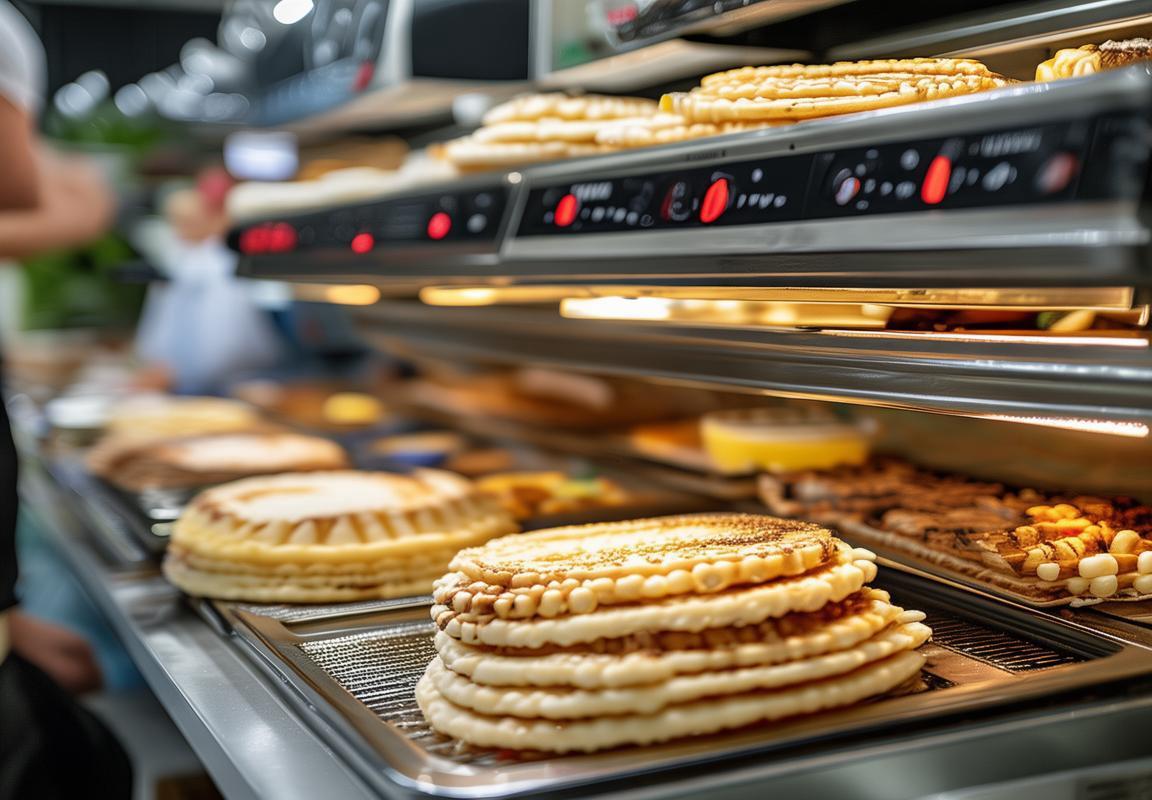
OEM Partnerships: The Key to Success in the Gaufrier Market
In the competitive landscape of the professional gaufrier market, OEM (Original Equipment Manufacturer) partnerships have emerged as a pivotal strategy for brands seeking to thrive. These collaborations are not just about producing goods; they are about crafting a narrative of innovation, quality, and market adaptability. Let’s delve into the intricacies of these partnerships and how they are shaping the industry.
The Rise of CustomizationOEM partnerships allow manufacturers to cater to the unique needs of their clients by offering customized solutions. In the gaufrier market, this means tailoring machines to specific applications, whether it’s for commercial bakeries, patisseries, or even foodservice establishments. This level of customization has become increasingly important as consumers demand more specialized products, leading to a surge in demand for gaufriers that can handle a variety of tasks and ingredients.
Global ExpansionAs the gaufrier market continues to grow, OEM partnerships play a crucial role in global expansion. Brands that collaborate with OEMs can leverage their local expertise and manufacturing capabilities to enter new markets with ease. This is particularly beneficial in regions where the infrastructure for local production might be lacking, but the demand for high-quality gaufriers is high. By partnering with established OEMs, brands can bypass the complexities of setting up new production facilities and focus on what they do best—branding and marketing.
Innovation through CollaborationInnovation is a cornerstone of the gaufrier market, and OEM partnerships are a breeding ground for new ideas. When two companies come together, they bring different perspectives, technologies, and R&D capabilities to the table. This cross-pollination of ideas can lead to the development of new features, such as improved efficiency, user-friendly interfaces, and advanced materials that enhance the durability and performance of gaufriers. The result is a continuous stream of products that push the boundaries of what is possible in the industry.
Cost-Effective ProductionOne of the primary advantages of OEM partnerships is the cost-effectiveness they offer. By outsourcing the manufacturing process to specialized OEMs, brands can reduce their overhead costs and focus on core competencies. OEMs often have economies of scale that can lead to lower production costs, which can be passed on to the end consumer. This cost advantage is particularly significant in a market where price sensitivity is a key factor in purchasing decisions.
Quality Control and CertificationQuality is non-negotiable in the professional gaufrier market, and OEM partnerships ensure that stringent quality control measures are in place. These collaborations often involve a shared commitment to compliance with international standards and certifications. Whether it’s ISO 9001 for quality management or CE marking for safety, OEMs are well-versed in navigating these regulatory landscapes. This not only protects the brand’s reputation but also builds trust with customers who demand the highest quality products.
Strategic FlexibilityThe ability to quickly adapt to market changes is crucial in the fast-paced gaufrier industry. OEM partnerships provide strategic flexibility, allowing brands to respond swiftly to new trends, consumer demands, and supply chain disruptions. For instance, if a new material becomes popular or a specific feature is sought after, an OEM can adjust production lines to meet these demands without the brand having to invest in new equipment or retool their facilities.
Long-Term RelationshipsSuccessful OEM partnerships are often built on long-term relationships. These collaborations are not just about a single project or product; they are about creating a sustainable business model. Over time, the trust and understanding between brands and OEMs can lead to a more integrated approach to product development, where both parties are invested in the success of the product line. This can result in a more cohesive product portfolio and a stronger market presence.
In conclusion, OEM partnerships in the gaufrier market are more than just a way to produce goods; they are a strategic tool that enables brands to innovate, expand, and maintain a competitive edge. By leveraging the strengths of their OEM partners, brands can focus on what they do best while ensuring that their products meet the evolving needs of the market.

Consumer Preferences: What Professionals Look for in Gaufriers?
In the competitive landscape of professional kitchens, the selection of the right gaufrier can be a game-changer. Professionals have a distinct set of preferences when it comes to these Belgian waffle makers, each factor contributing to their choice.
Gauging Capacity and VersatilityProfessionals often seek gaufriers that offer a high capacity, allowing them to serve more customers in a shorter time. The ability to produce multiple waffles at once is crucial, especially during peak hours. Additionally, versatility becomes key, as professionals look for models that can make not just traditional Belgian waffles but also various other shapes and sizes, catering to a diverse clientele.
Quality of MaterialsThe materials used in the construction of a professional gaufrier are non-negotiable. Professionals demand build quality that stands the test of time, with durable non-stick surfaces that are easy to clean and maintain. Stainless steel bodies and high-grade components are preferred to ensure the gaufrier is robust and reliable, capable of handling the rigors of a busy kitchen environment.
Ease of Use and MaintenanceEfficiency is paramount in a professional setting, and the ease of use of a gaufrier is a significant factor in its popularity. Professionals seek gaufriers with intuitive interfaces, clear temperature controls, and straightforward operation. Moreover, the maintenance aspect is crucial, as a machine that is complicated to clean or repair can lead to downtime and lost revenue.
Power and PerformanceThe power of a gaufrier is a key consideration for professionals. Machines that heat up quickly and maintain a consistent temperature are highly favored. The ability to produce waffles with even browning and crisp texture is essential, as the quality of the product directly impacts the customer experience.
Brand Reputation and WarrantyThe reputation of the brand and the warranty offered are often top of the list for professionals. Brands known for their reliability and customer service are more likely to be chosen, as are those that offer robust warranties, providing peace of mind in case of any manufacturing defects or malfunctions.
Customization and PersonalizationIn some cases, professionals may look for customization options to match their specific needs. This could include adjustable temperature settings, various waffle shapes, or even branding opportunities to create a unique presentation for their customers.
Energy EfficiencyWith increasing environmental concerns and operational costs, professionals are more mindful of energy efficiency. A gaufrier that consumes less power while still delivering high performance is a significant draw, as it can lead to savings on energy bills over time.
Durability and LongevityThe longevity of the gaufrier is a critical factor for professionals. They seek appliances that are built to last, with components that are not only sturdy but also replaceable. This ensures that the gaufrier can continue to operate at peak performance for years to come.
Customer Feedback and ReviewsWord of mouth and customer reviews play a crucial role in the selection process. Professionals often rely on the experiences of others who have used similar gaufriers, looking for consistent feedback that a particular model is worth the investment.
In conclusion, professionals in the gaufrier market are discerning buyers, focusing on the practicality, efficiency, and quality of the appliances they choose. Their preferences are shaped by the demands of their business and the expectations of their customers, leading them to prioritize features that enhance productivity, customer satisfaction, and long-term reliability.
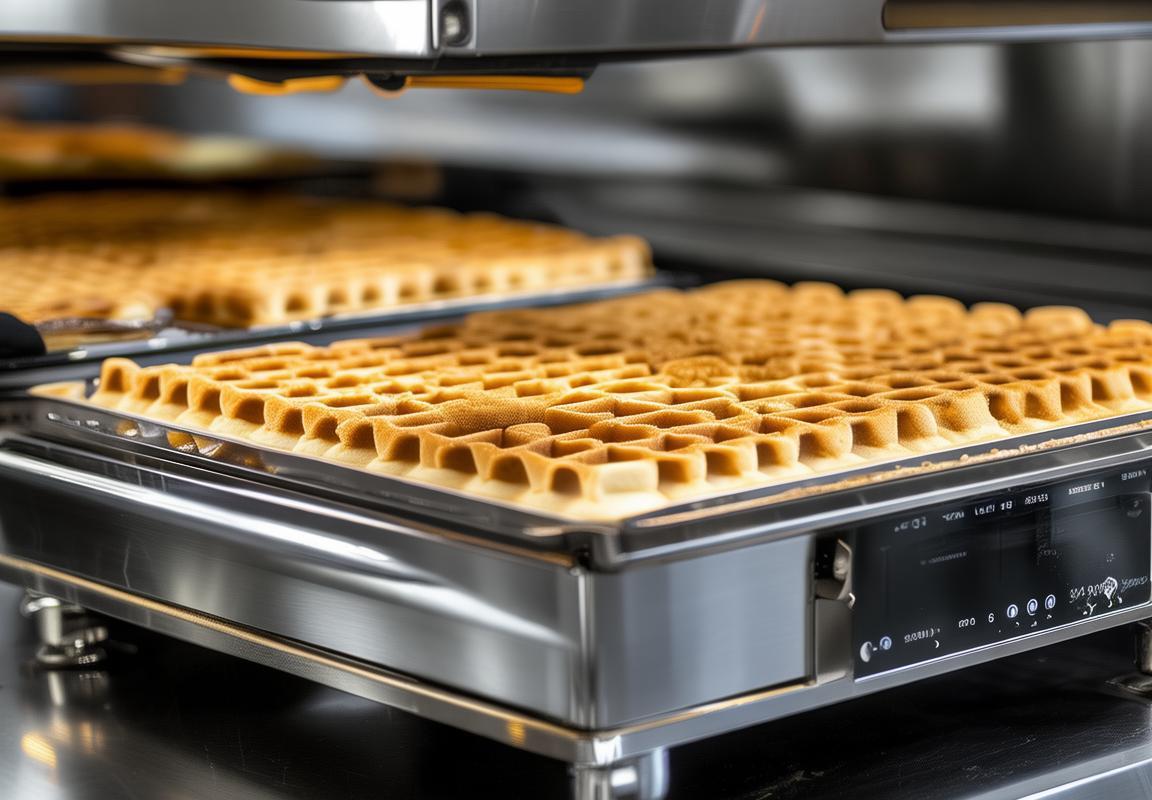
Innovations in Design and Technology: Driving Growth
In recent years, the gaufrier market has witnessed a surge in innovation, both in design and technology. These advancements are not only enhancing the user experience but also driving significant growth in the industry. Let’s delve into some of the key innovations shaping the landscape of professional gaufriers.
The integration of smart technology is a notable trend that has transformed the traditional gaufrier. Modern models now come equipped with digital controls, allowing for precise temperature regulation and timers. This level of customization ensures that professionals can achieve consistent and high-quality results every time they bake.
One innovation that has made a substantial impact is the inclusion of non-stick surfaces. This feature not only simplifies the cleaning process but also reduces the risk of cakes sticking to the molds, which can be a common issue with older models. The use of high-quality, durable materials ensures that these non-stick coatings last longer, adding value to the product.
Another significant development is the focus on energy efficiency. As sustainability becomes a growing concern, manufacturers are pushing the boundaries to create gaufriers that consume less energy without compromising performance. This not only benefits the environment but also helps businesses reduce their operational costs in the long run.
The design of gaufriers has evolved to cater to a variety of needs. Professional chefs and bakers are looking for appliances that not only fit seamlessly into their kitchen layouts but also offer a range of features that can enhance their workflow. For instance, some models now feature compact designs that save space without sacrificing functionality, making them ideal for busy kitchens.
The introduction of multi-functional gaufriers has also been a game-changer. These appliances can not only bake traditional waffles but also serve as a platform for various other culinary creations, such as pancakes, crepes, and even desserts. This versatility allows professionals to diversify their offerings and keep their menus fresh and exciting.
In terms of materials, there has been a shift towards using more robust and long-lasting components. For example, stainless steel has become a preferred choice for the construction of gaufriers due to its durability and ability to withstand high temperatures. This not only ensures that the appliances can withstand the rigors of commercial use but also contributes to their longevity.
One of the most remarkable innovations in recent times is the integration of self-cleaning capabilities. These features utilize steam or high temperatures to dissolve baked-on residue, making the cleaning process almost effortless for the user. This is particularly beneficial in high-volume kitchens where time is of the essence.
Moreover, the rise of touchscreens and intuitive interfaces has made gaufriers more user-friendly than ever before. Professionals can now navigate through settings and recipes with ease, eliminating the need for complex buttons or dials. This user-centric design approach has been well-received, as it reflects a deeper understanding of the needs of the target market.
Safety features have also seen a significant upgrade. Modern gaufriers come with various safety mechanisms, such as automatic shut-off functions, which prevent overheating and potential fires. These features are particularly important in commercial kitchens where the risk of accidents is higher.
Innovation in gaufrier design and technology has also extended to the realm of connectivity. Some models are now compatible with smart kitchen systems, allowing for remote monitoring and control. This means professionals can manage their appliances from anywhere, which is especially useful for those who operate multiple locations or prefer to work from home.
The rise of eco-friendly practices has spurred manufacturers to develop gaufriers that are more environmentally conscious. From using recycled materials to designing for disassembly and recycling, these appliances are contributing to a greener planet while still delivering exceptional performance.
Lastly, the emphasis on customization has allowed manufacturers to cater to niche markets. Gaufriers are now available in various sizes, shapes, and with a wide array of attachments, allowing professionals to tailor their appliances to their specific requirements.
In summary, the innovations in design and technology have revolutionized the professional gaufrier market. These advancements have not only enhanced the capabilities of the appliances but also addressed the evolving needs of professionals in the culinary industry. As technology continues to evolve, we can expect to see even more innovative features that will further propel the growth of the gaufrier market.
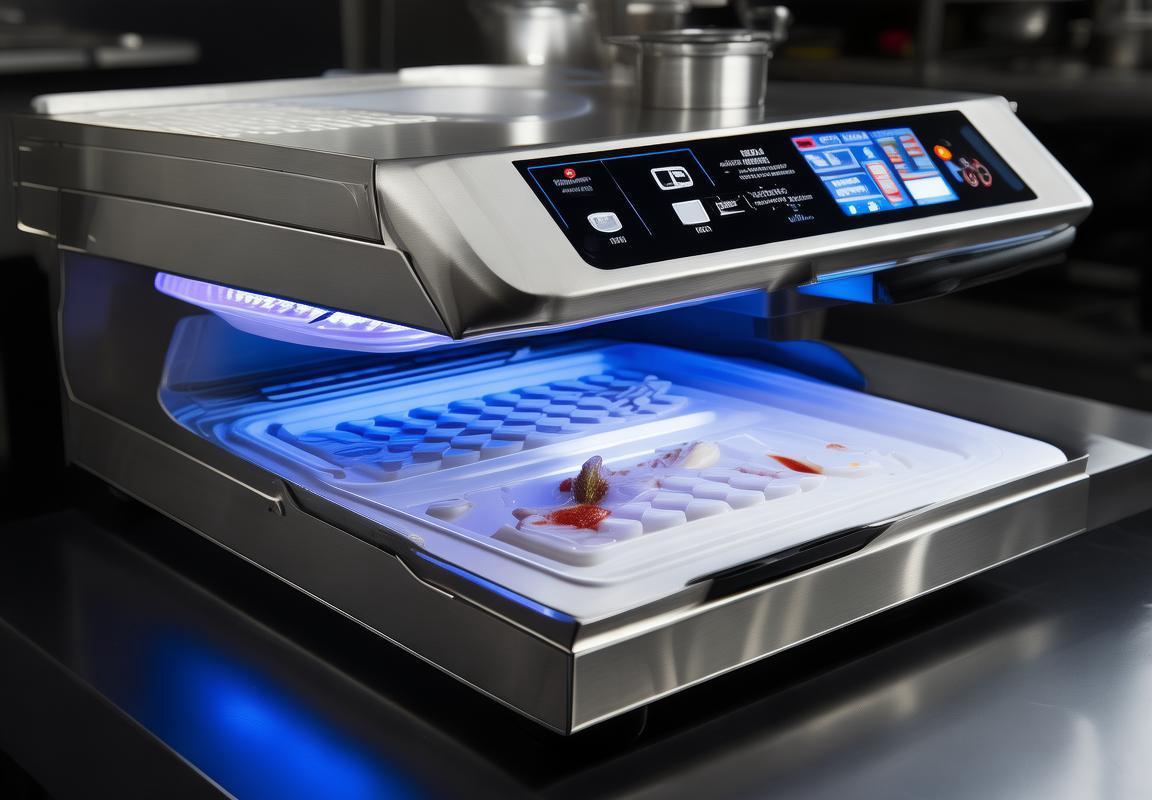
Challenges and Opportunities: A Closer Look at the Gaufrier OEM Landscape
The professional gaufrier market has seen a surge in demand, and this growth is fueled by a complex interplay of challenges and opportunities. Navigating this landscape requires a keen understanding of the evolving dynamics that shape the OEM (Original Equipment Manufacturer) sector. Here’s a closer look at the multifaceted challenges and opportunities in the gaufrier OEM landscape:
The rise of gourmet food culture has spurred a demand for high-quality, specialized kitchen equipment, and the gaufrier is no exception. As chefs and culinary professionals seek to enhance their offerings, the pressure on OEMs to deliver durable and efficient gaufriers has intensified. This demand has pushed manufacturers to innovate, but it also presents challenges in terms of cost and consistency.
One of the primary challenges in the gaufrier OEM landscape is the need to balance innovation with cost-effectiveness. Consumers and end-users, particularly in the professional culinary sector, are looking for top-tier performance at competitive prices. This means that OEMs must find ways to incorporate advanced technologies and materials without driving up the cost of production.
Another significant challenge is the compliance with various regulations and standards. In Europe and North America, there are stringent health and safety regulations that gaufrier manufacturers must adhere to. Ensuring that products meet these requirements without compromising on quality or performance is a delicate balancing act for OEMs.
The competitive nature of the market also poses a challenge. There are numerous players vying for market share, which means OEMs must differentiate their products. This differentiation can come in the form of unique features, superior build quality, or exceptional customer service, but it requires a significant investment in research and development.
Despite these challenges, there are numerous opportunities in the gaufrier OEM landscape. One such opportunity lies in the customization of products to meet the specific needs of different market segments. For instance, some establishments may require a gaufrier with a larger output capacity, while others might prioritize speed and energy efficiency. By offering tailored solutions, OEMs can tap into niche markets and build a loyal customer base.
The rise of smart kitchen technology is another opportunity that OEMs can exploit. Integrating IoT (Internet of Things) capabilities into gaufriers can provide chefs with real-time monitoring and control, allowing for precise temperature and timing adjustments. This not only enhances the cooking experience but also opens up new possibilities for data analysis and predictive maintenance.
Globalization has also created opportunities for OEMs to expand their reach. As culinary trends spread across borders, there is a growing demand for gaufriers in regions that were previously untapped. This international expansion can lead to significant growth for companies that are able to adapt their products and services to meet the needs of diverse markets.
The sustainability movement is yet another opportunity in the gaufrier OEM landscape. As more businesses seek to reduce their environmental footprint, there is a growing demand for energy-efficient and eco-friendly appliances. OEMs that can offer sustainable solutions, such as appliances made from recycled materials or those that use renewable energy, are likely to gain a competitive edge.
Moreover, the opportunity to collaborate with renowned brands and distributors is a significant advantage. By associating their products with well-known names, OEMs can enhance their credibility and appeal to a broader customer base. These partnerships can also lead to co-branded products that cater to specific market needs, further expanding the potential for growth.
In conclusion, the gaufrier OEM landscape is characterized by both challenges and opportunities. While OEMs must navigate the complexities of innovation, cost, and compliance, they also have the chance to capitalize on trends such as customization, smart technology, globalization, sustainability, and strategic partnerships. By staying agile and forward-thinking, OEMs in the gaufrier market can position themselves for success in a rapidly evolving industry.

Case Studies: Successful OEM Collaborations in the Gaufrier Sector
In the competitive landscape of the gaufrier sector, successful OEM (Original Equipment Manufacturer) collaborations have become pivotal for brands aiming to stand out. These partnerships often lead to innovative products that cater to the evolving demands of consumers. Let’s delve into a few case studies that highlight the benefits and outcomes of such successful OEM collaborations.
-
Customization and Market FitCollaborations between OEMs and brands often begin with a focus on customization. For instance, a well-known appliance manufacturer partnered with an OEM to develop a line of gaufriers with unique features tailored to the needs of European and North American markets. The result was a gaufrier that not only met the specific requirements of professional chefs but also resonated with the discerning tastes of consumers looking for high-quality, specialized kitchen appliances.
-
Quality Control and EfficiencyOne of the key advantages of OEM partnerships is the ability to maintain strict quality control. A high-end gourmet kitchen brand chose an OEM to produce their gaufriers, ensuring that every unit met their exacting standards. This collaboration allowed the brand to focus on their core competencies while the OEM managed the manufacturing process, leading to increased efficiency and a reduced time-to-market.
-
Cost-Effective ProductionFor many brands, cost-effectiveness is a critical factor in OEM partnerships. A mid-range kitchen appliance company found that by outsourcing the production of their gaufriers to an OEM, they could offer a competitive price point without compromising on quality. The OEM’s expertise in bulk production and supply chain management allowed the brand to achieve economies of scale, ultimately benefiting the end consumer.
-
Innovation and Product DevelopmentInnovation is often at the heart of successful OEM collaborations. A startup brand looking to enter the professional gaufrier market partnered with an OEM that had a track record of innovation. Together, they developed a gaufrier with advanced features like a programmable interface, adjustable temperature controls, and a sleek, modern design. This innovative product quickly gained traction in the market, setting a new standard for the category.
-
Global ExpansionFor brands looking to expand their reach into new markets, OEM partnerships can be instrumental. An established European gaufrier brand sought to enter the North American market and partnered with a local OEM that had a deep understanding of the region’s distribution channels and consumer preferences. This strategic move allowed the brand to enter the market with a product that was well-suited to the local audience, ensuring a successful launch.
-
Sustainability and Eco-Friendly SolutionsSustainability has become a significant trend in the kitchen appliance industry, and OEM collaborations have played a role in driving eco-friendly solutions. A brand committed to sustainability partnered with an OEM to develop a line of gaufriers that were not only energy-efficient but also made from recycled materials. This initiative not only appealed to environmentally conscious consumers but also helped the brand differentiate itself in a crowded market.
-
Customized Marketing and BrandingSuccessful OEM collaborations often extend beyond the product itself, into the realm of marketing and branding. A luxury kitchen appliance brand worked with an OEM to create a gaufrier that was not just a functional appliance but also a statement piece. The OEM’s design team helped the brand develop a unique branding strategy that highlighted the gaufrier’s premium status, enhancing the overall market appeal.
-
After-Sales Service and SupportThe reliability of after-sales service is crucial in the appliance industry, and OEM partnerships can play a vital role in ensuring customer satisfaction. A brand that focused on customer service partnered with an OEM that offered comprehensive after-sales support. This included training for service technicians, easy-to-access replacement parts, and a responsive customer service team, all of which contributed to a positive customer experience and brand loyalty.
These case studies illustrate the multifaceted nature of successful OEM collaborations in the gaufrier sector. From customization and cost-effectiveness to innovation and global expansion, these partnerships have become a cornerstone for brands aiming to thrive in a dynamic and competitive market.
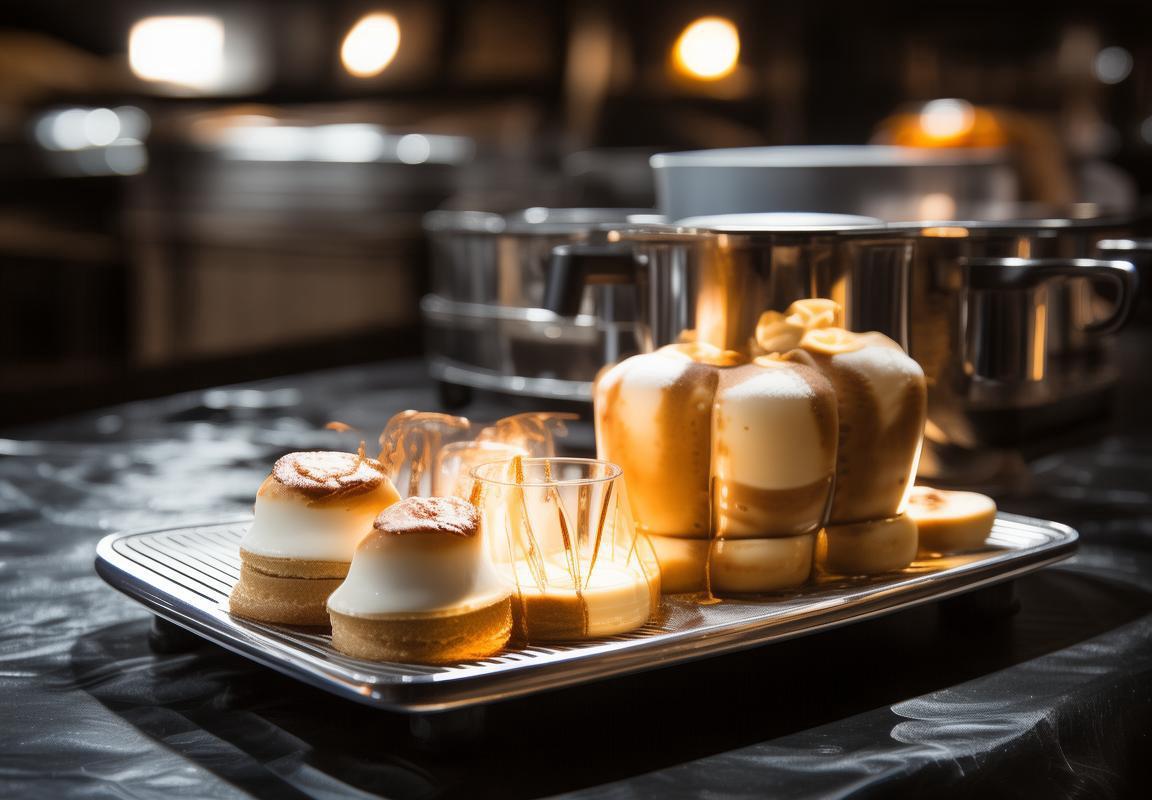
Regulatory Environment: Navigating the European and North American Markets
In the European and North American markets, navigating the regulatory environment for gaufrier manufacturers and OEMs is a complex task. Compliance with local and international standards, safety regulations, and labeling requirements can significantly impact product development, marketing, and distribution. Here’s an overview of the key considerations in this landscape.
Manufacturers and OEMs must adhere to stringent safety standards, which often vary by country. In Europe, for instance, the General Product Safety Directive (GPSD) sets out the essential safety requirements for all products placed on the market, including gaufriers. This directive emphasizes the need for risk prevention and requires that products are designed and manufactured to minimize the risk of harm to consumers.
Similarly, North American markets, primarily the United States and Canada, have their own safety regulations. In the U.S., the Consumer Product Safety Improvement Act (CPSIA) sets the foundation for safety standards, requiring that all products, including gaufriers, be tested for lead and other heavy metals, as well as for phthalates and flammability. In Canada, the Canadian Consumer Product Safety Act (CCPSA) is the primary legislation governing product safety.
Energy efficiency is another crucial factor in the regulatory environment. In both Europe and North America, there are initiatives aimed at reducing energy consumption and promoting environmentally friendly products. For example, the European Union’s Energy Labeling Directive requires that energy-efficient appliances, including kitchen equipment like gaufriers, display their energy consumption on the label, helping consumers make informed choices.
Labeling and packaging regulations also play a significant role. In Europe, the EU Regulation on the Marketing of Products with Dimensions No Greater Than 10 x 10 x 20 Centimeters (Regulation (EC) No 1935⁄2004) dictates the requirements for labeling small household appliances like gaufriers. This includes providing information on the product’s composition, use, and disposal.
In North America, the Nutrition Labeling and Education Act (NLEA) governs food labeling, which is relevant for gaufriers that are used to prepare food. Additionally, the FDA’s Food Contact Substance (FCS) regulations must be considered for any material that comes into contact with food.
Certification and quality assurance are vital for gaufrier OEMs. ISO certifications, such as ISO 9001 for quality management and ISO 14001 for environmental management, are recognized globally and can enhance a company’s reputation. In Europe, obtaining the CE mark, which signifies conformity with EU legislation, is a must for any product sold on the continent.
In North America, while the CE mark is not required, manufacturers must comply with local standards and obtain the necessary certifications, such as those from Underwriters Laboratories (UL) or the Canadian Standards Association (CSA).
The regulatory environment also extends to product recycling and waste management. Both Europe and North America have recycling programs and waste management regulations that manufacturers must consider. The Waste Electrical and Electronic Equipment (WEEE) Directive in Europe and the Electronic Waste (e-waste) regulations in North America require that manufacturers take responsibility for the recycling of electronic and electrical products.
Consumer rights and warranties are another area of focus. In Europe, the Directive on Consumer Rights (DIR) protects consumers by setting out the minimum standards of consumer protection, including the right to information, the right to withdrawal, and the right to redress. In North America, the Magnuson-Moss Warranty Act provides similar protections.
The regulatory landscape is not static; it evolves with technological advancements, new materials, and changing consumer expectations. For gaufrier OEMs, staying informed and adaptable is key to navigating these complex requirements and ensuring compliance.
To sum up, the regulatory environment in Europe and North America for gaufrier OEMs encompasses a broad range of standards and regulations that touch on safety, energy efficiency, labeling, certification, recycling, and consumer rights. By understanding and adhering to these requirements, manufacturers can ensure their products meet the high standards expected in these markets and build a reputation for quality and reliability.

Future Outlook: Predictions for the Professional Gaufrier Market
In the ever-evolving landscape of the professional gaufrier market, several key trends are emerging that are reshaping the industry. From the increasing demand for energy-efficient appliances to the integration of smart technology, these trends are driving growth and innovation.
The rise of health-conscious consumers has led to a surge in demand for gourmet breakfast items, including Belgian waffles. This has spurred manufacturers to produce professional gaufriers that not only meet the culinary standards but also cater to the health needs of consumers. Moreover, the convenience of owning a professional-grade appliance at home has become increasingly popular, creating a new segment within the market.
Another significant trend is the shift towards sustainable practices. Manufacturers are now focusing on creating products that are environmentally friendly, using recycled materials and reducing their carbon footprint. This not only appeals to eco-conscious consumers but also to businesses looking to enhance their corporate social responsibility profiles.
Smart technology has also made its mark in the gaufrier industry. New models are equipped with features like touchscreens, timers, and adjustable heat settings, allowing users to achieve perfect waffles every time. This level of control and convenience is something that professionals and enthusiasts alike are seeking in their appliances.
The demand for customization is on the rise, with consumers looking for appliances that can accommodate various types of batter, from the classic Belgian to batter with fruits, nuts, or even chocolate chips. This trend has prompted manufacturers to develop more versatile gaufriers with removable plates and interchangeable molds.
In terms of distribution, online sales have become a crucial channel for reaching consumers. With the rise of e-commerce, it’s now easier than ever for manufacturers to offer their products to a wider audience, bypassing traditional retail channels. This shift has also led to increased competition, as more brands vie for a share of the online market.
In Europe and North America, the regulatory environment plays a significant role in shaping the gaufrier market. Compliance with safety standards, energy efficiency regulations, and certification requirements is essential for manufacturers looking to expand into these markets. European regulations, in particular, are stringent, with the European Union’s Eco-design Directive and Energy Labelling Directive imposing strict requirements on the energy consumption and environmental impact of appliances.
The North American market, while less stringent than Europe, also has its own set of regulations. The U.S. Department of Energy (DOE) and the U.S. Environmental Protection Agency (EPA) oversee energy efficiency standards, ensuring that appliances meet certain energy-saving criteria. Similarly, Canada has its own set of regulations that manufacturers must adhere to.
Despite the challenges posed by these regulations, there are numerous opportunities for growth. The aging population in both Europe and North America is leading to an increased demand for products that simplify daily tasks, such as cooking. Additionally, the growing trend of foodie culture and the rise of social media influencers are creating new opportunities for innovative and high-quality gaufriers to gain traction.
Looking ahead, the future of the professional gaufrier market is bright. Advances in technology are expected to continue to drive innovation, with the integration of AI and machine learning potentially leading to appliances that can learn from user preferences and optimize their performance accordingly.
The use of 3D printing and other additive manufacturing techniques may also pave the way for highly customized and efficient appliances, as manufacturers can quickly adapt to market demands and consumer trends.
Moreover, the increasing focus on health and wellness is likely to push the market towards the development of appliances that offer more than just functionality. Consumers are expected to seek out products that promote healthy eating habits and offer nutritional information, further blurring the lines between kitchen appliances and wellness tools.
Lastly, the potential for cross-border collaborations and the expansion of e-commerce platforms are opening up new markets for manufacturers. By leveraging these opportunities, the professional gaufrier market is poised for significant growth in the coming years.